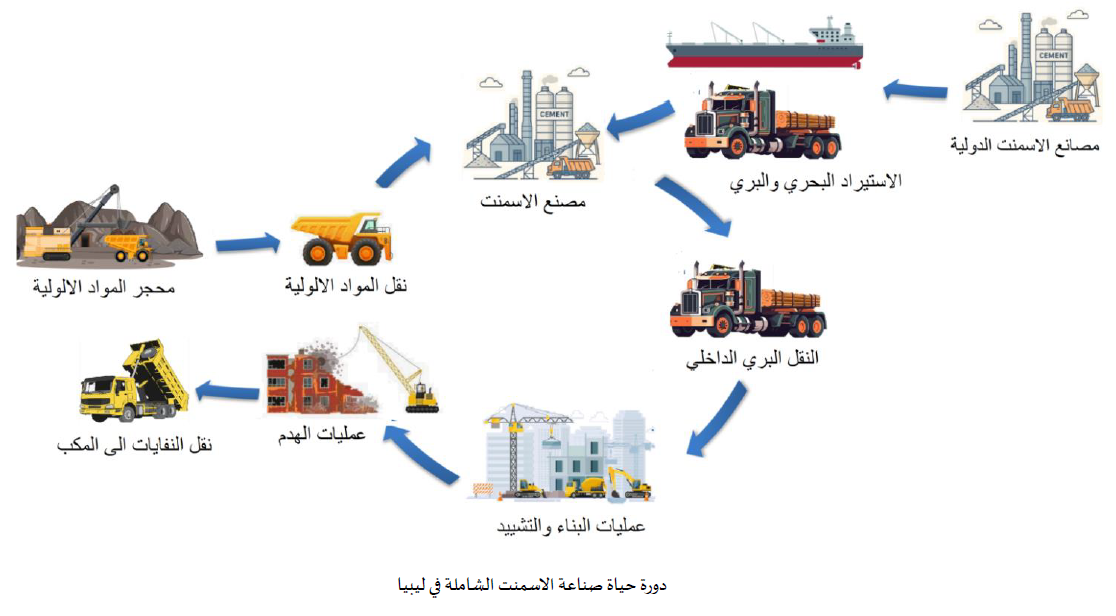Carbon Emissions Life Cycle Assessment of Cement Industry in Libya
DOI:
https://doi.org/10.63318/waujpasv3i2_21Keywords:
Life cycle assessment, System boundary, Cement Industry, CO2 emissions, LibyaAbstract
The cement industry is experiencing rapid growth due to the swift urban expansion in various countries around the world, with global cement production reaching approximately 4.2 billion tons in 2024. The cement industry contributes about 44% of total CO2 missions in the industrial sector, which is estimated to account for around 30% of global emissions. This study aims to estimate CO2 missions throughout the life cycle of the cement industry in Libya by tracking CO2 emission sources in four cement production plants from the quarry stage to the demolition phase and waste transport to landfills. It also considers the additional amount of CO2 emissions from cement-exporting countries to the Libyan market (Egypt, Tunisia, and Turkey) during manufacturing and transportation processes. Including the CO2 emissions from imported cement within the total CO2 emissions of locally produced cement is a novel addition exclusive to this study, which has contributed to determining the true environmental cost of cement production in Libya. The results obtained indicate that the CO2 emission factor for the cement industry in Libya is approximately 1,083.60 kg CO2 per ton of cement consumed in Libya, a figure that is high compared to the global average of 0.798 tons CO2 per ton of cement, and is close to the emissions of some countries such as Egypt, South Africa, and Myanmar, which rely on traditional fuels for energy production in cement plants. The study also identified the contribution percentage of each stage of the cement industry life cycle to CO2 emissions. Additionally, the study presented some measures and strategies to reduce pollution and mitigate environmental damage.
Downloads

Downloads
Published
Issue
Section
License

This work is licensed under a Creative Commons Attribution-NonCommercial 4.0 International License.
This journal uses Creative Commons Attribution-Noncommerical 4.0 International License (CC BY-NC 4.0), which permits use, sharing, adaptation, distribution and reproduction in any medium or format, as long as you give appropriate credit to the original author(s) and the source, provide a link to the Creative Commons license, and indicate if changes were made. To view a copy of this license, visit https://creativecommons.org/licenses/by-nc/4.0/.
Copyright of articles
Authors retain copyright of their articles published in this journal.




